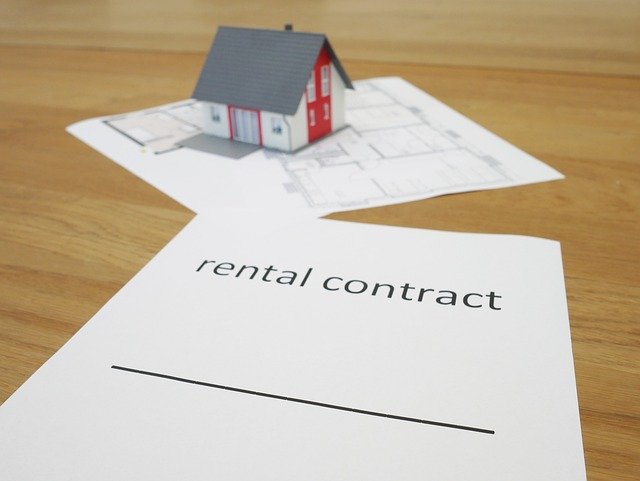Unlock Homeownership in 2025: Your Complete Guide to Rent-to-Own Homes
As the housing market continues to evolve, many aspiring homeowners are seeking alternative paths to property ownership. Rent-to-own homes have emerged as an innovative solution, offering a unique blend of renting and buying that can make homeownership more accessible. This comprehensive guide will explore the key advantages of rent-to-own homes, why they're gaining popularity in 2025, and how this arrangement can support your journey to homeownership.

What exactly is a rent-to-own home agreement?
A rent-to-own home agreement, also known as a lease-option or lease-purchase agreement, allows potential buyers to rent a property for a specified period with the option to purchase it at the end of the lease term. This arrangement typically involves paying a higher monthly rent, with a portion of that payment going towards the future purchase of the home. It’s a flexible approach that combines the benefits of renting with the opportunity to build equity and eventually own the property.
How does the rent-to-own process work step-by-step?
-
Find a suitable property: Look for homes offered with rent-to-own options or negotiate with landlords willing to consider such an arrangement.
-
Sign the agreement: Enter into a lease agreement that includes an option to buy the property at a predetermined price within a specific timeframe.
-
Pay the option fee: This one-time, non-refundable fee secures your right to purchase the home later.
-
Make monthly payments: Pay rent, which often includes an extra amount that goes towards your future down payment or purchase price.
-
Maintain the property: Take responsibility for maintenance and repairs as agreed upon in the contract.
-
Decision time: At the end of the lease term, decide whether to exercise your option to buy or walk away.
What are the key advantages of rent-to-own homes in 2025?
Rent-to-own homes offer several benefits that make them increasingly attractive in 2025:
-
Gradual transition to homeownership: This option allows you to ease into homeownership while building your credit and saving for a down payment.
-
Lock-in purchase price: You can secure the future purchase price of the home, protecting you from market fluctuations.
-
Test-drive the property: Living in the home before buying gives you a chance to ensure it meets your long-term needs.
-
Flexibility: If circumstances change, you have the option to walk away without the commitment of a traditional mortgage.
-
Build equity: A portion of your rent payments goes towards your future home purchase, helping you build equity over time.
Why are rent-to-own agreements gaining popularity in 2025?
The increasing popularity of rent-to-own agreements in 2025 can be attributed to several factors:
-
Rising housing costs: As traditional homeownership becomes more challenging, rent-to-own offers an alternative path.
-
Changing work environments: With remote work becoming more common, people are seeking flexible housing options that align with their evolving lifestyles.
-
Credit challenges: For those with less-than-perfect credit, rent-to-own provides an opportunity to work towards homeownership while improving their financial situation.
-
Millennial and Gen Z preferences: Younger generations are looking for innovative solutions that offer both flexibility and the potential for long-term stability.
-
Economic uncertainty: Rent-to-own agreements provide a middle ground between renting and buying, appealing to those cautious about long-term financial commitments.
How can rent-to-own support your journey to homeownership?
Rent-to-own arrangements can be a valuable stepping stone on your path to homeownership. They allow you to:
-
Build your credit score: Consistent, on-time rent payments can help improve your credit profile.
-
Save for a down payment: The extra portion of rent that goes towards your future purchase acts as a forced savings mechanism.
-
Gain homeownership experience: You’ll learn about property maintenance and the responsibilities of owning a home before fully committing.
-
Overcome financial hurdles: This option provides time to address credit issues or save more money while working towards ownership.
-
Adjust to the neighborhood: You can ensure the area suits your lifestyle before making a long-term commitment.
What are the potential risks and considerations of rent-to-own homes?
While rent-to-own homes offer many benefits, it’s essential to consider potential drawbacks:
-
Higher monthly payments: Rent is typically above market rate to account for the portion going towards your future purchase.
-
Limited inventory: Fewer homes are available for rent-to-own compared to traditional rentals or purchases.
-
Contractual complexities: These agreements can be complicated, requiring careful review and possibly legal advice.
-
Market risks: If property values decline, you may be locked into a higher purchase price.
-
Forfeiture of payments: If you decide not to buy, you’ll lose the extra money paid towards the purchase option.
Prices, rates, or cost estimates mentioned in this article are based on the latest available information but may change over time. Independent research is advised before making financial decisions.
Rent-to-own homes present a unique opportunity for those looking to explore alternative homeownership paths without relying on traditional mortgages. By understanding the process, advantages, and potential risks, you can make an informed decision about whether this option aligns with your homeownership goals in 2025 and beyond. As with any significant financial decision, it’s crucial to carefully consider your personal circumstances and consult with financial and legal professionals before entering into a rent-to-own agreement.






